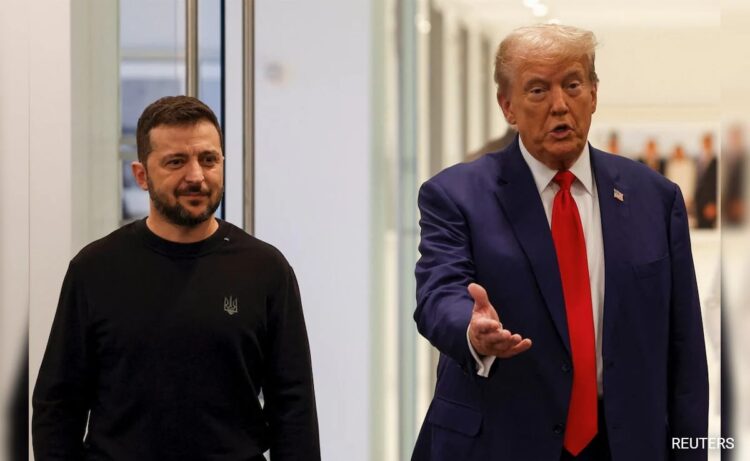Ukraine has reached an agreement with the United States on a minerals deal that Ukrainian officials believe will strengthen ties with the Trump administration and lay the groundwork for a long-term US security commitment.
The deal, which allows for the joint development of Ukraine’s mineral resources, including oil and gas, was finalized after the US dropped its initial demand for a $500 billion revenue share.

While the agreement does not include explicit security guarantees, Ukrainian officials argue they have secured more favorable terms. They view the deal as an opportunity to deepen economic cooperation with the US and bolster Ukraine’s stability after three years of war.
Zelenskyy Set to Visit Washington to Formalize Deal
Ukrainian President Volodymyr Zelenskyy is expected to travel to Washington on Friday to meet with Donald Trump and officially sign the agreement. The US president appeared to confirm the visit, saying, “I hear that [Zelenskyy is] coming on Friday. Certainly, it’s OK with me if he’d like to.”
The deal comes after months of difficult negotiations. The initial draft, which Trump framed as a means for Ukraine to repay the US for military and financial aid since Russia’s 2022 invasion, sparked outrage in Kyiv and among European allies. After Zelenskyy rejected the original proposal last week, Trump labeled him a “dictator” and suggested Ukraine was responsible for starting the war.
The final agreement, dated February 25, establishes a fund into which Ukraine will contribute 50 percent of proceeds from the future monetization of state-owned mineral resources. The fund will also have the authority to invest in Ukrainian projects.
Key Details and Remaining Uncertainties
Ukraine possesses significant deposits of critical minerals, including lithium, graphite, cobalt, titanium, and rare earth elements essential for industries like defense and electric vehicles. However, the agreement excludes resources that are already contributing to Ukraine’s economy, meaning companies like Naftogaz and Ukrnafta will not be affected.
One major omission from the deal is any mention of US security guarantees, which Kyiv initially insisted on. Additionally, critical details such as the size of the US stake in the fund and the specifics of “joint ownership” agreements remain unresolved and will be addressed in future negotiations.
The Trump administration’s original proposal called for a US-controlled reconstruction investment fund in which Washington would hold a “100 percent financial interest.” Ukraine was expected to contribute half of the revenue from mineral extraction, up to $500 billion.
These terms were ultimately removed from the final draft after pushback from Kyiv. The revised agreement ensures that the fund will be used for Ukraine’s economic development, aligning more closely with Kyiv’s priorities.
Political Hurdles and Future Implications
Despite reaching an agreement, the deal still faces political hurdles. Ukraine’s parliament must approve the deal, and opposition lawmakers have indicated they will demand thorough scrutiny before ratification. The jurisdiction governing the agreement also remains an open question.
Meanwhile, Trump’s shift in US policy toward Ukraine has raised concerns. After three years of Washington being Kyiv’s primary military aid provider, Trump has begun direct bilateral negotiations with Russia, excluding Ukraine and European allies from the discussions.
White House Press Secretary Karoline Leavitt emphasized the urgency of finalizing the agreement, stating, “It is critical that this deal is signed,” though she provided no updates on ongoing talks.
Ukrainian officials, however, maintain that this is merely a framework agreement, with no revenue transfers occurring until the fund is fully operational, giving both sides time to resolve remaining issues.

















Comments